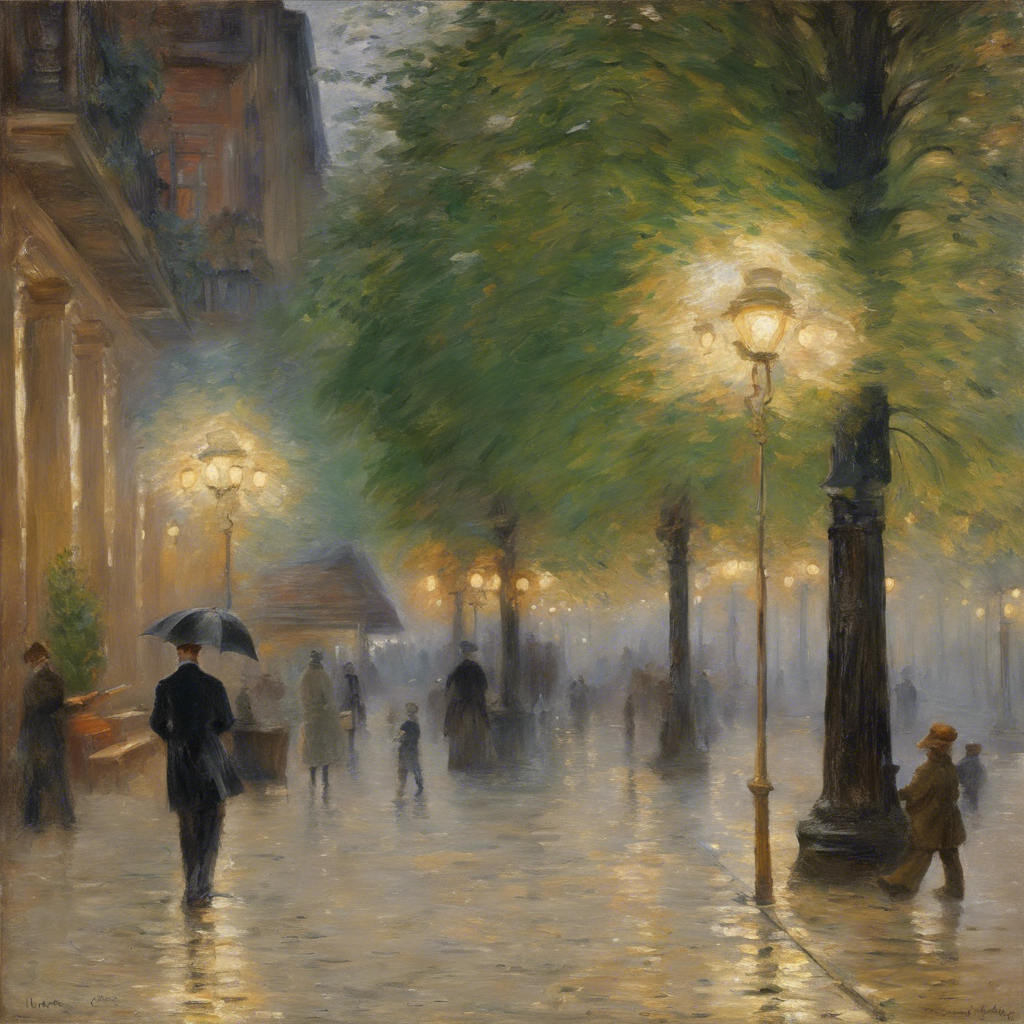Impressionism, a revolutionary art movement that emerged in 19th-century France, transformed the landscape of painting. By focusing on the fleeting effects of light and color, Impressionist artists challenged traditional artistic conventions and paved the way for modern art.
Core Techniques of Impressionism
Impressionist artists employed a unique set of techniques to capture the essence of a scene. Some of the key techniques include:
- En Plein Air Painting:
- Outdoor Painting: Impressionists rejected the traditional studio practice and instead chose to paint outdoors, directly observing the subject matter in natural light.
- Rapid Brushwork: To capture the fleeting effects of light and shadow, they used quick, loose brushstrokes, often applying paint directly from the tube.
- Broken Color:
- Divisionism: Impressionists divided colors into small, distinct strokes, allowing the eye to blend them together and perceive the overall color and tone.
- Optical Mixing: This technique relied on the viewer’s eye to blend the colors, creating a vibrant and shimmering effect.
- Emphasis on Light and Atmosphere:
- Capturing the Moment: Impressionists aimed to capture the specific atmospheric conditions of a particular moment, whether it was a sunny day, a cloudy afternoon, or a foggy morning.
- Play of Light and Shadow: They explored the interplay of light and shadow, using color to convey the intensity and direction of light.
The Philosophy Behind Impressionism
Impressionism was not merely a stylistic innovation; it was a philosophical movement that reflected the spirit of the age. Key philosophical underpinnings of Impressionism include:
- Realism and Subjectivity:
- Personal Interpretation: Impressionists believed in the artist’s subjective interpretation of reality, rather than a strict adherence to objective representation.
- Capturing the Momentary: They sought to capture the fleeting impressions of a scene, emphasizing the transitory nature of experience.
- The Importance of Perception:
- The Eye as the Instrument: Impressionists recognized the role of the viewer’s eye in perceiving and interpreting a painting.
- Optical Mixing: By using broken color and small brushstrokes, they invited the viewer to actively participate in the creation of the image.
- A New Aesthetic:
- Emphasis on Color and Light: Impressionists prioritized color and light over form and line.
- A Shift from the Traditional: They challenged the academic conventions of painting, prioritizing spontaneity and immediacy.
Key Impressionist Artists
Several prominent artists contributed to the development and dissemination of Impressionism. Some of the most notable include:
- Claude Monet: Known for his series paintings of water lilies, cathedrals, and landscapes, Monet was a master of capturing the effects of light and atmosphere.
- Pierre-Auguste Renoir: Renoir’s paintings, often characterized by their vibrant colors and joyful subjects, celebrate the beauty of life and nature.
- Édouard Manet: A transitional figure between Realism and Impressionism, Manet’s work challenged traditional conventions and paved the way for the Impressionist movement.
- Edgar Degas: Degas is famous for his depictions of ballet dancers, racehorses, and everyday life. He often used unconventional compositions and perspectives.
- Camille Pissarro: Pissarro was a key figure in the development of Impressionism, influencing many of his contemporaries. He is known for his landscapes and cityscapes.
The Legacy of Impressionism
Impressionism’s impact on the art world is immeasurable. It inspired subsequent movements like Post-Impressionism, Cubism, and Abstract Expressionism. The movement’s emphasis on individuality, experimentation, and the exploration of new forms of expression continues to resonate with artists today.
By breaking away from traditional artistic conventions, Impressionists opened up new possibilities for painting. Their focus on light, color, and the subjective experience has left an enduring legacy that continues to inspire and captivate audiences around the world.
References:
- The Metropolitan Museum of Art: https://www.metmuseum.org/
- The Art Institute of Chicago: https://www.artic.edu/
- Tate: https://www.tate.org.uk/visit/tate-modern
- Gardner’s Art Through the Ages by Fred S. Kleiner and Christin J. Mamiya
- The Story of Art by E.H. Gombrich


